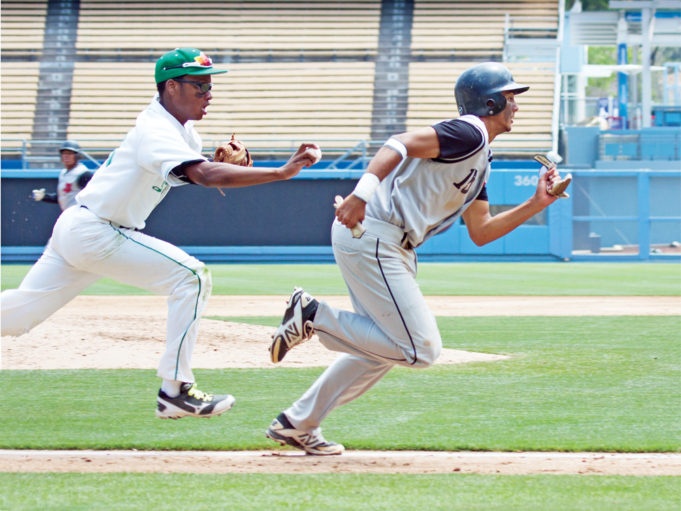Rundowns are usually the result of a runner being too aggressive. Depending on the level of play, players may go into panic mode. Umpires can’t afford to fall into the same trap and need to keep calm during rundowns. Here are some things to remember in rundown situations.
• Consider the possibility of obstruction. Because fielders rotate in and out of the rundown as throws are made and the runner is chased down, it is pretty easy for one of the fielders who has just made a throw to fail to get out of the way quickly enough to avoid the runner changing direction.
• Interference can occur. Acts such as attempting to knock the ball out of the glove of a fielder in possession of the ball or using a body part to intentionally interfere with the flight of a throw from one fielder to another are the most common examples.
• While trying to avoid being tagged out, the runner may not run more than three feet left or right of a direct line between the base and his location at the time a play is made on him. The basepath may change due to multiple throws and changes of direction.
• Get in position to see a swipe tag. Moving laterally with the play will allow you to maintain an angle that may be necessary to see the tag properly. It is possible that despite great effort to maintain a good angle, you may not be able to see the tag placed clearly on the runner. In those situations, the reaction of the runner and/or whether the fielder’s outstretched glove hand appeared to meet some resistance as it swiped at the runner will help you make the call.
• Depending on the size of the crew and runner configurations, the plate umpire may be able to hustle from behind the plate to get in position to help his partner on the opposite end of a rundown. The responsibility of calling the tag varies. If a runner is tagged in the chest, for instance, the umpire whom the runner is facing has the call. If the runner is diving into a base, the trail umpire makes the call.
• Know how to react if two baserunners wind up on the same base. The defense likely doesn’t know the rule and will tag both runners. The lead runner is entitled to the base, unless it is a force-play situation. Consequently, he is not in jeopardy, while the trail runner is out.
What's Your Call? Leave a Comment:
Note: This article is archival in nature. Rules, interpretations, mechanics, philosophies and other information may or may not be correct for the current year.
This article is the copyright of ©Referee Enterprises, Inc., and may not be republished in whole or in part online, in print or in any capacity without expressed written permission from Referee. The article is made available for educational use by individuals.

















